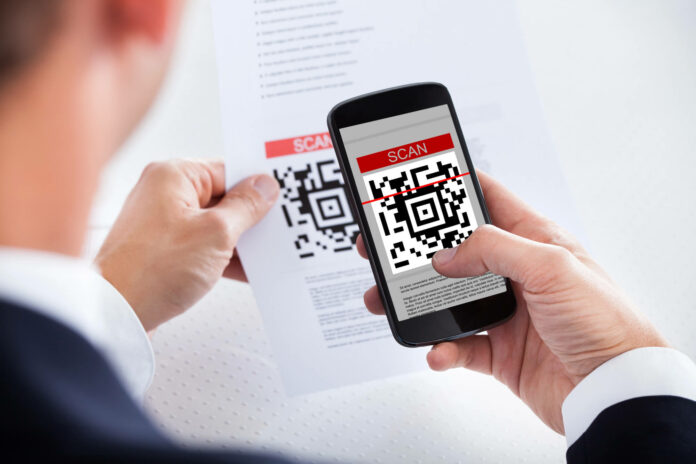Accounting may be built on numbers, but the profession runs on documents. Engagement letters, KYC files, onboarding forms, tax schedules, audit evidence, checklists, statements, amendments, the flow never stops. Yet most firms still rely on email attachments, long PDF chains and scattered portals that clients often forget or struggle to navigate.
This creates unnecessary delays, confusion around “latest versions,” and a surprising amount of follow-up work for accountants.
That’s why many firms are adopting a simple, lightweight solution to streamline their workflows: dynamic QR codes. Instead of sending clients multiple attachments, they now use QR codes for accounting documents to provide one clean, scannable point of access to updated files.
It’s a small change that reduces friction for clients and saves valuable time for accountants.
Why Accounting Firms Are Turning to QR Codes
Accounting workflows suffer from a few recurring pain points:
- Clients using outdated forms
- Version confusion during audits or tax filings
- Reprinting compliance updates
- Email threads that get lost or ignored
- Clients who don’t know which document to sign
- Manual follow-up just to confirm receipt
Dynamic QR codes solve these issues by letting firms update the document behind the QR instantly.
The code stays the same. The information stays current.
And because clients scan using their phone no portal logins, no downloads the process becomes naturally easier.
Where Accountants Are Using QR Codes Today
1. Onboarding & Client Intake
Firms place a single QR code on:
- engagement letters
- welcome packs
- business cards
- reception signage
The QR links clients to:
- ID verification instructions
- questionnaires
- document upload guidelines
- terms & conditions
- fee schedules
When something changes, the destination updates instantly no need to resend anything.
2. Audit & Assurance Projects
Audits involve frequent document revisions.
Teams attach QR codes to audit evidence lists, checklists, risk assessments and walkthrough notes.
Benefits:
- updated requirements without creating new versions
- less email clutter
- fewer errors during testing
- smoother collaboration between teams and clients
3. Tax Filings & Compliance
QR codes ensure clients always reference the latest:
- Tax return checklists
- required supporting documents
- compliance instructions
- deadlines
- submission steps
This reduces last-minute clarifications and cuts the time spent chasing clients.
4. Internal SOPs & Staff Training
Inside the firm, QR codes simplify access to:
- procedure manuals
- checklists
- software guides
- workflow diagrams
New staff get the “correct version” by default especially useful during busy season.
Physical Documents That Require Digital Context
Accounting sometimes blends physical and digital workflows:
- printed invoices
- payroll packets
- year-end financial statements
- shareholder packs
A QR code can provide:
- supporting schedules
- notes
- background data
- upload locations
- client-specific instructions
The printed document becomes a gateway to richer context.
The Hidden Advantage: Version Control Without the Pain
Accountants know the chaos caused by versioning problems.
Clients sign old forms.
Teams use outdated templates.
Audit trails get messy.
With dynamic QR documents:
- only one version exists
- updates happen silently
- every scan opens the latest file
- outdated versions are never seen again
- the firm maintains full control
This eliminates one of the biggest sources of operational inefficiency.
How QR Codes Improve Client Experience (A Big Win for Retention)
Clients don’t enjoy the administrative side of accounting.
They want clarity, not long email threads.
QR codes help clients by offering:
- one clear access point
- no searching
- no attachments to manage
- mobile-friendly navigation
- less confusion around what to send
When the client journey feels simple, retention naturally increases.
Cost Savings for Firms
Dynamic QR workflows reduce:
- repeated printing
- staff time spent on follow-ups
- mistakes caused by outdated forms
- email back-and-forth
- administrative overhead
Small firms gain speed.
Large firms reduce operational drag.
Both win.
A Practical Example for Firms
Imagine your firm updates a tax checklist after a regulatory change.
Normally, you would:
- Export the updated PDF
- Email every client
- Hope they ignore the previous version
- Answer questions about “which file is correct?”
With a dynamic QR:
- You update one file.
- Every client automatically accesses the correct version.
- Zero confusion. Zero reprints. Zero follow-up.
It’s the kind of operational clarity accountants appreciate.
Final Thought
Accounting firms don’t need more complexity.
They need cleaner workflows, fewer client errors and smoother communication.
Dynamic QR codes deliver exactly that.
They turn every printed document, email signature, lobby sign or welcome pack into a smart access point one that keeps clients on the right path and frees accountants from repetitive version control tasks.
Sometimes innovation doesn’t come from new software.
Sometimes it comes from making the everyday details easier.

